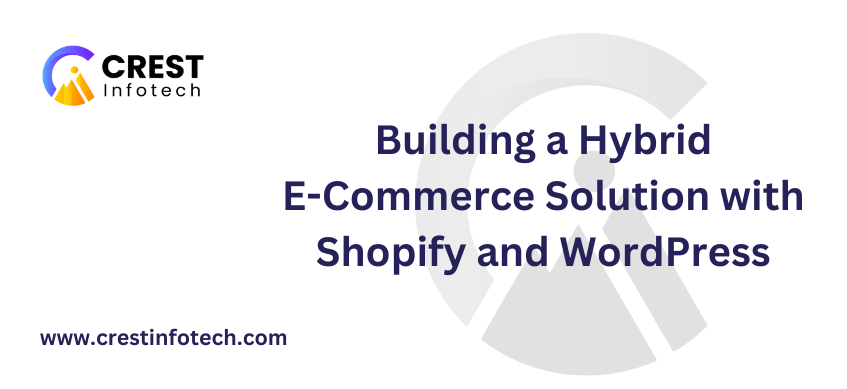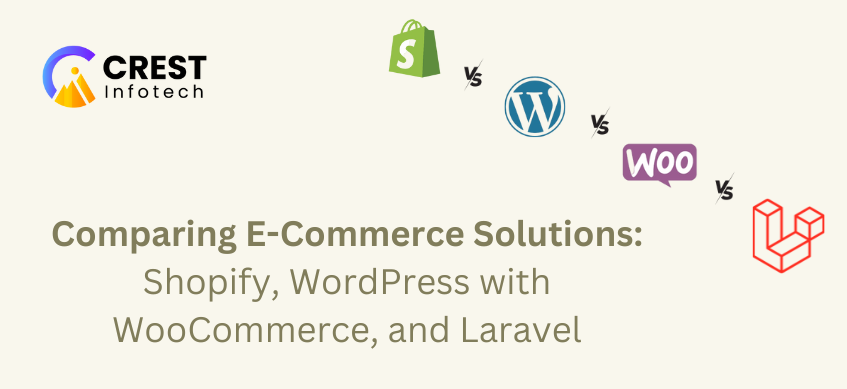In today’s digital landscape, businesses are increasingly looking for flexible and scalable e-commerce solutions that can cater to their diverse needs. Shopify, a leading e-commerce platform, is known for its ease of use and extensive features, while WordPress, as a powerful content management system, offers robust customization options. Combining the strengths of both platforms allows you to create a hybrid e-commerce solution that enhances user experience, boosts sales, and provides greater control over your online presence. This article will guide you through building a hybrid e-commerce solution using Shopify and WordPress.
Why Combine Shopify and WordPress?
Before diving into the integration process, let’s explore the reasons for combining Shopify and WordPress:
- Enhanced Flexibility: Shopify excels in managing online stores, while WordPress offers extensive customization options through themes and plugins. By integrating the two, you can create a highly personalized shopping experience.
- Improved Content Management: WordPress is renowned for its blogging capabilities, allowing you to create engaging content that drives traffic to your store. This content can enhance SEO and help you build a loyal customer base.
- Streamlined E-Commerce Features: Shopify provides robust e-commerce functionalities, including payment processing, inventory management, and customer management, which can seamlessly integrate with your WordPress site.
- Scalability: As your business grows, you can leverage the strengths of both platforms to accommodate increased traffic and sales without sacrificing performance.
Steps to Build a Hybrid E-Commerce Solution
Step 1: Set Up Your Shopify Store
- Create a Shopify Account:
- Go to the Shopify website and sign up for an account. Choose a plan that suits your business needs.
- Design Your Store:
- Choose a theme from the Shopify Theme Store or create a custom design. Customize your store’s appearance using the Shopify admin panel.
- Add Products:
- Go to the “Products” section in your Shopify dashboard to add products. Include essential details such as product descriptions, prices, images, and inventory levels.
- Set Up Payment and Shipping:
- Configure payment gateways (e.g., PayPal, Stripe) and shipping options in the Shopify settings to facilitate transactions.
Step 2: Set Up Your WordPress Site
- Install WordPress:
- Choose a hosting provider that supports WordPress and install WordPress. Popular options include Bluehost, SiteGround, and WP Engine.
- Choose a Theme:
- Select a theme that complements your brand and supports WooCommerce if you plan to sell products directly through WordPress.
- Install Necessary Plugins:
- Install essential plugins like WooCommerce for e-commerce functionality, Yoast SEO for optimizing your content, and Elementor or WPBakery for page building.
Step 3: Integrate Shopify with WordPress
Option 1: Use Shopify Buy Button
The Shopify Buy Button allows you to embed products from your Shopify store directly into your WordPress site.
- Enable the Buy Button:
- In your Shopify admin, go to “Sales Channels” and click on the “Buy Button” channel. Click “Create a Buy Button.”
- Select Products:
- Choose the products you want to embed and customize the button’s appearance.
- Copy the Embed Code:
- After customizing, copy the generated embed code.
- Embed in WordPress:
- In your WordPress editor, paste the code into the desired page or post where you want the products to appear.
Option 2: Use a WordPress Plugin
Several plugins allow seamless integration between Shopify and WordPress. Here are a couple of popular options:
- Shopify eCommerce Plugin:
- Install the Shopify eCommerce plugin on your WordPress site. Configure the plugin by connecting it to your Shopify store, allowing you to manage products directly from WordPress.
- WP Shopify:
- WP Shopify is a plugin that enables you to integrate your Shopify store with WordPress without compromising on performance. It allows you to sync products and manage them within your WordPress dashboard.
Step 4: Create Engaging Content
- Blogging:
- Utilize WordPress’s blogging capabilities to create engaging content around your products. Write blog posts that highlight product benefits, tutorials, or industry trends to attract organic traffic.
- SEO Optimization:
- Use the Yoast SEO plugin to optimize your content for search engines. Focus on keywords relevant to your niche to improve visibility and attract potential customers.
- Landing Pages:
- Create dedicated landing pages for specific products or promotions. Use page builders like Elementor to design visually appealing pages that drive conversions.
Step 5: Monitor and Optimize Performance
- Analytics:
- Use Google Analytics to track visitor behavior on both your Shopify store and WordPress site. Monitor metrics such as traffic sources, conversion rates, and user engagement.
- A/B Testing:
- Experiment with different layouts, product placements, and calls to action to determine what resonates best with your audience. Use tools like Google Optimize for A/B testing.
- Performance Optimization:
- Ensure your WordPress site is optimized for speed. Use caching plugins (e.g., W3 Total Cache) and image optimization tools (e.g., Smush) to enhance loading times.
Step 6: Streamline Customer Support
- Customer Service Integration:
- Use customer support tools like Zendesk or Tawk.to to manage customer inquiries seamlessly across both platforms.
- FAQ Section:
- Create a comprehensive FAQ section on your WordPress site to address common customer questions, reducing the workload on your support team.
Conclusion
Building a hybrid e-commerce solution with Shopify and WordPress allows you to leverage the strengths of both platforms, enhancing your online store’s functionality, flexibility, and scalability. By integrating Shopify’s e-commerce capabilities with WordPress’s powerful content management features, you can create a seamless shopping experience that attracts and retains customers. Whether you are a small business owner or an entrepreneur looking to expand your online presence, this hybrid approach can help you achieve your e-commerce goals while maximizing efficiency and engagement. With the right strategy and tools in place, your hybrid e-commerce solution can flourish in today’s competitive market.



